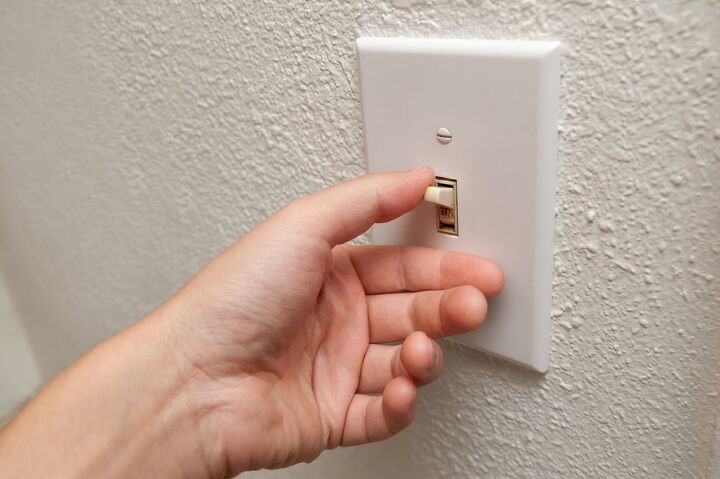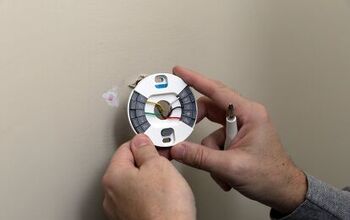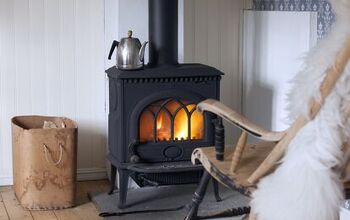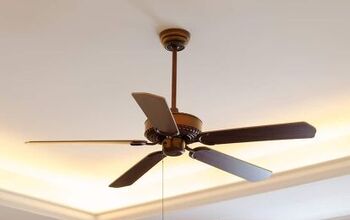What Is The Difference Between A Single And Double Pole Switch?

Switches are used for operating lights, fans, garbage disposal, and even large electrical mechanisms. However, not all switches are the same. Planning out which switches and sockets to have in your home bears many questions.
One of the most common questions around switches is the difference between a single and double pole switch.
Simply put, the common simple light switches you see in your home are single-pole switches. They operate one circuit and offer a standard on and off function. Double pole switches are generally used to control 240V circuits and operate higher demand appliances and motors.
To know more about single and double pole switches, and the difference between them, check out our in-depth guide below.
Do You Need to Hire an Electrician?
Get free, zero-commitment quotes from pro contractors near you.

What Are Electrical Switches Anyway?
Electrical switches are used to interrupt the electrical flow in a circuit. Essentially, a switch is a binary mechanism: it’s either completely closed (ON) or open (OFF). Switches are used on anything that operates using electricity.
When the switch is turned off (open), the circuit path is open which indicates no current flows through the circuit. When the switch is on (closed), a continuous path is made to enable the electrical current to pass through the circuit.
There are many different types of switches and as mentioned before, we’ll discuss the single and double pole switch, and their key differences.
What Are Poles and Throws?
The terms poles and throws refer to switch contact variations. The “poles” are the separate circuits that are operated by a switch. Conversely, “throws” describe the number of separate positions that the switch can adopt.
A single-throw switch features a pair of contacts that can be close or open. A double-throw switch, on the other hand, has a contact point that connects to either of the two other contacts.
The basic types of switches are Single Pole, Double Throw (SPDT), Double Pole, Double Throw (DPDT), Single Pole, Single Throw (SPST), and Double Pole, Single Throw (DPST).
What is a Single-Pole Switch?
As far as switches go, the single-pole switch is the go-to workhorse for general purposes. This type of switch is used to operate lights, fans, or any other device from a single location. The switch only controls the flow of the current in one direction.
Perhaps the most distinguishable characteristic of a single-pole switch is the on and off toggle. However, not all single pole switches have the on/off labeling, most notably the rocker style switches.
Under the hood, single-pole switches come with two brass-colored screw terminals that connect to the power source wires. On a side note, the power source or hot wires are black in color. One of the terminals is for the incoming power source wire while the other terminal accommodates the outgoing hot wire.
As a rule of thumb, neutral wires (usually in white) aren’t connected to the switch. However, in the instance that the neutral is attached to the switch, it functions as a hot wire. In that case, a black tape should be wrapped around the white wire indicating that the neutral operates as a hot wire.
What is a Double Pole Switch?
Although double pole switches aka four-way switches are primarily used in industrial settings, they’re also found in residential wiring systems. Similar to the single-pole switch, a double pole switch comes with an on/off labeling. Also, the switch controls the device, fixture, or mechanism from a single location.
A noteworthy feature of double pole switches is their four hot brass terminal and a ground terminal. This enables you to attach the switch to two pairs of power sources from a 240-volt circuit.
Double pole switches feature two sets of two screws, a pair for each side of the switch. Double pole wiring is used for setting up two and three-way switching for lights and fixtures. A good example of this is when you have a switch both at the top and bottom of your stairs.
A double pole switch is usually rated at 30 amps, twice than a standard switch rated at 15-20 amps. These switches make it possible to safely isolate appliances. As mentioned, double pole wiring is used for heavy-load appliances like showers and cookers.
The Key Differences Between Single-Pole and Double-Pole Switches
How Single-Pole Switches Look
When a switch is wired to a 120-volt circuit, its purpose is to interrupt a single hot wire. It only has one pair of terminals which is why it’s called a single-pole switch. If you closely look at a single-pole switch, you’ll see a pair of brass terminals and a ground screw.
In a single-pole wiring system, the live hot wire is usually black and it connects to one side of the terminal. The outgoing hot wire attaches to the other end of the terminal.
How Double-Pole Switches Look
On the flip side, a double pole switch features two sets of brass terminals and a ground screw. This type of switch operates a circuit with two hot wires. Double pole wiring has four hot wires attached to it: two black and two red.
One pair of black and red wire connects to the power supply’s switch. The other outgoing pair of wires feed the device. When the switch is toggled, the current is cut to both circuits at the same time.
As you can see, the main difference between a single-pole switch and a double switch is the number of terminals and controlled circuits.
Single Pole vs. Double Pole Switches
Aside from the terminals and circuits, another important distinction of double pole switching is it’s rated for a higher current. Generally, the current rating is labeled and it should be equal or higher than the current draw of the device. In higher ratings, a double pole switch is ideal because it has more room for thicker wires.
In essence, wiring a single pole and double pole switch are similar. However, you have to keep in mind that the red wires go on one side of the switch and the black wires on the other. Mixing up your wires means a faulty switch and can be dangerous.
When it comes to neutral wires, neither the single or double pole has the terminals for them. Neutral wires are spliced together in the switch box to completely bypass the switch. In terms of safety, both switches require ground screws that must be attached to a circuit ground.
Choosing the Right Switch for Your Needs
For most general applications, a standard single-pole switch should get the job done. For example, if you need a switch to operate a light or fan, a single switch works best. On the other hand, if you want to operate a device at two locations, you need a double pole switch.
Here are some things to consider when choosing the right switch.
- If you’re using a 120V power supply, you only need a single-pole switch.
- If you want to be able to operate a light switch in two locations (e.g. up and down the stairs), use double pole wiring.
- If you’re looking to turn on or off a demanding electrical device, a double pole switch is required.
WARNING: Make sure that you always ground your switches for safety reasons.
What’s the Advantage of Double Pole Over Single-Pole?
This is a case of on-off vs isolation switching. Single pole switches work best for turning on and off a light fixture or appliance. However, for isolating a circuit, a double pole works better and mainly because it’s safer.
In the U.S., we have a way of supplying two poles with a higher voltage (240V). In cases like this, a double pole switch is needed so the machine isn’t left energized at the other voltages. Furthermore, for power tools with heavy amperage and a metal body, it’s safer to use double pole switches.
Overall, for the most standard applications, you’ll be fine with using a single-pole switch. For heavy-duty uses like power tools and water heaters, you should use a double pole switch.
Related Questions
Can I Wire a Double Pole Switch to Work As a Single-Pole?
Yes, you can! Wiring a double pole switch as a single pole is fairly easy since only one side is used rather than both. Essentially, a double pole is just two single switches together and can be controlled in two different locations.The idea is to connect the wire to just connect on one side and only one switch or location controls the circuit. When you’re wiring switches, make sure to always check the power before starting the process. Also, when using a metal box, wrap a piece of electrical tape around the screws to protect against shorts and arcs.
Do You Need to Hire an Electrician?
Get free, zero-commitment quotes from pro contractors near you.

According to the National Electrical Code (NEC), all new circuit installations are required to have proper grounding. For older homes, it’s not unheard of to find switches with no grounding. In this case, it can be left as is. When replacing switches, an equipment ground isn’t required.
Switches don’t have to be grounded if the junction box is metal and the said box is grounded. In this setup, the switches connect with the box through the grounding screws. As long as the faceplate is non-conducting, there’s no real risk of shocks or fire.
Light switches are grounded to add another layer of protection against shocks, electrocution, and fire. Even if the ground wire isn’t properly connected, the switch will still work. Grounding is all about safety.
Related Guides

We are a team of passionate homeowners, home improvement pros, and DIY enthusiasts who enjoy sharing home improvement, housekeeping, decorating, and more with other homeowners! Whether you're looking for a step-by-step guide on fixing an appliance or the cost of installing a fence, we've here to help.
More by Upgraded Home Team













![The 5 Best Angle Grinders – [2022 Reviews & Buyer's Guide]](https://cdn-fastly.upgradedhome.com/media/2023/07/31/9071326/the-5-best-angle-grinders-2022-reviews-buyer-s-guide.jpg?size=350x220)
![How Much Weight Can a 4×4 Support Horizontally? [It Depends!]](https://cdn-fastly.upgradedhome.com/media/2023/07/31/9070333/how-much-weight-can-a-44-support-horizontally-it-depends.jpg?size=350x220)












